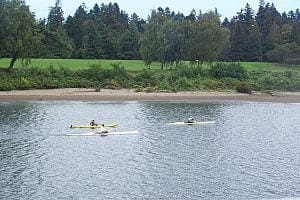statFor some women, it's about making an elegantement at special events or being a couple…

What You Can Learn From “The Healthiest Places to Live”
 While your own genes certainly play a role, studies have consistently found that other factors (including environmental and behavioral ones) are even more important when it comes to living a long and healthy life. These factors include keeping active, maintaining a healthy diet, keeping stress levels low, remaining socially “connected” and having a positive outlook on life. With these types of things in mind, it seems obvious that having a healthy lifestyle is easier to do when you live in a place that’s supportive of your wellness goals. But what does a healthiest places like that look like? And is it possible to make your own local environment look a little bit more like that?
While your own genes certainly play a role, studies have consistently found that other factors (including environmental and behavioral ones) are even more important when it comes to living a long and healthy life. These factors include keeping active, maintaining a healthy diet, keeping stress levels low, remaining socially “connected” and having a positive outlook on life. With these types of things in mind, it seems obvious that having a healthy lifestyle is easier to do when you live in a place that’s supportive of your wellness goals. But what does a healthiest places like that look like? And is it possible to make your own local environment look a little bit more like that?
Let’s start by talking about what a “Healthy Place to Live” looks like. Your first instinct might be to think about health-conscious southern California. If so, you certainly wouldn’t be alone in making this association. But you’d be wrong. You might be surprised to learn that no southern California city is even in the top 10 for healthy living while a few other areas of the state are well-represented. So if southern California isn’t a poster child for good health, which areas of the country are?
According to a 2013 report by the American Academy of Sports Medicine (AASM), the top three healthiest places to live in the US are Minneapolis, Washington D.C. and Portland, Oregon. Rounding out the top 10 are San Francisco, Denver, Boston, Sacramento, Seattle, Hartford and San Jose. The annual AASM ranking was based on an analysis of the 50 largest metropolitan areas in the country. So what makes these particular cities more supportive of healthy lifestyle choices? And—just as importantly—what can we learn from them that might help improve our own situation in some small way?
The AASM report analyzed a number of different benefits that communities provide to their residents that support the maintenance of an active, healthy lifestyle. The researchers evaluated access to health care, levels of chronic disease, preventive health behaviors (such as the percentage of people who smoke) and policies and resources that encourage physical activity. The top areas in the country had built bike trails, walking trails, had banned smoking in all public places, both indoors and out, and had low rates of obesity and cardiovascular disease. Minneapolis edged out other areas due to a drop in smoking and the improved health status of residents. And according to Forbes, the Minneapolis-St. Paul area is rated as having the least stress of any major metropolitan area in the US.
Washington D.C. boasts a very large number of recreational facilities that encourage physical activity and its residents are more likely to walk or bike to work. Plus there’s easy access to farmers’ markets where residents can buy local and organic foods, including the kinds of fresh fruits and vegetables that are staple of every healthy diet.
In addition to having plenty of opportunities to keep active, such as walking and biking to work, Portland residents also have access to farmers’ markets 5 days out of every week and there is a good ratio of health care providers to the general population.
So if you’re interested in exploring what some other parts of the country have to offer in terms of a healthy lifestyle, you may want to take a closer look at some of these highly-ranked cities. Even if you wouldn’t—or couldn’t—seriously consider relocating, you can still learn something about the kinds of factors (controllable and uncontrollable) that seem to matter most when it comes to wellness. You might also take the opportunity to consider honestly which of your own lifestyle decisions are really driven by particular aspects of your local environment and how many of these would be likely to change if the environment around you were different.
If you do discover specific factors holding you back, then it may be possible to compensate for them or modify them in creative ways. In other words, it may be possible for you to modify your own environment so that it’s a little bit more supportive of your own healthiest places or lifestyle goals. By doing this, you can turn a little bit of “armchair wellness tourism” into meaningful insights you can use.




